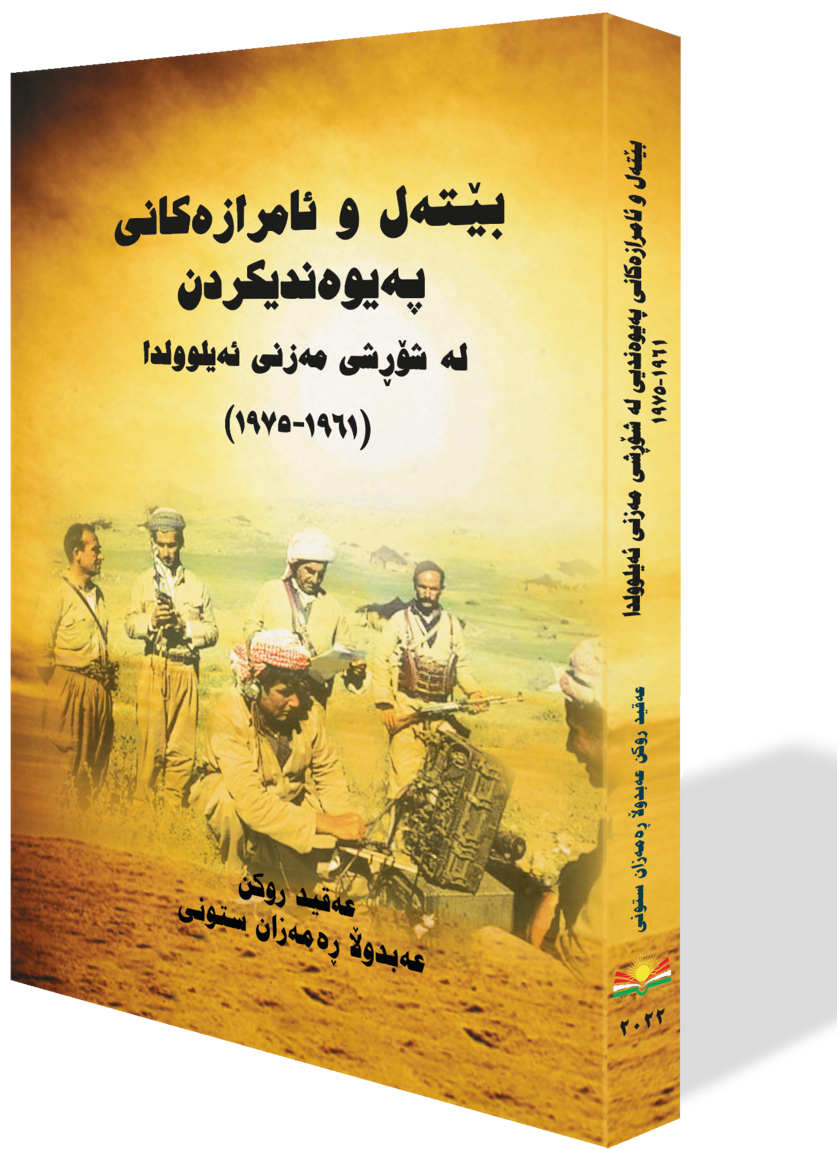Translate Content
Wireless in the Great September Revolution 1961 -1975

The book consists of an introduction, eleven chapters, three appendices of photographs, wireless photographs, and documents.
The book's first part deals with the stages of the rise of communications equipment and the September Revolution. How to obtain communication equipment, the seizure of the first wireless equipment in the Badinan region, and the wireless seizure in the battles.
The second part covers the stages of establishing and expanding public intelligence, the first stage between 1961-1964, the second stage between 1964-1970, and the third and final stage between 1970-1975.
Aras wireless, the first base of the revolutionary wireless, analysis of the first encrypted letter at the beginning of the revolution, wireless at the headquarters of the Political Bureau (Cham Rezan), the beginning of establishing the communication network (wireless) at the headquarters of the Political Bureau,
Relationship between Revolutionary Wireless and Government Wireless,
Establishment of General wireless in 1964, wireless Courses.
The third section deals with streaming and types of communication with wireless equipment, as well as the first stream sent or received since the establishment of the communication network.
The fourth part discusses encryption and the definition of encryption, and the role of encrypted streams and encrypted letters in protecting the lives of the Peshmerga and Mullah Mustafa Barzani.
Forewarning of the arrival of foreign journalists through encrypted letters.
The fifth section describes Morse, an instrument and term for sending and exchanging letters that generally consists of dots and lines.
The sixth part generally discusses radio, which is another means of communication, as well as radio stations, the first radio of the revolution, the first broadcast of the Voice of Kurdistan radio station, and so on. The idea of naming Shorsh Station as Voice of Kurdistan Radio of Iraq, Radio is a close friend of Mullah Mustafa Barzani.
The seventh section deals with the telephone and the revolution's Switchboard. The first telephone communication network became the September Revolution.
Part eight deals with the role of the spies in the September Revolution.
Part ninth, wireless Headquarters and means of transportation of the equipment.
Section tenth describes the divisions of the General Intelligence Agency and the types of wireless.
Part eleventh presents the role of intelligence in training cadres in other parts of Kurdistan, as well as the assistance of other Kurdish parties by the revolutionary wireless, Mullah Mustafa Barzani's plan to control the enemy wireless, some importance and other uses of wireless in general—names of wireless cadres in the September Revolution.
Download (PDF) Read online


